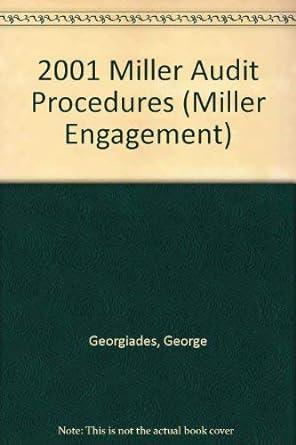Question
On December 31, 2018, M Company held X Company bonds in its portfolio of available-for-sale securities. The bonds have a par value of $15,000, carry
On December 31, 2018, M Company held X Company bonds in its portfolio of available-for-sale securities. The bonds have a par value of $15,000, carry a 10% annual interest rate, mature in 2025, and had originally been purchased at par. The market value of the bonds at December 31, 2018 was $13,000. The December 31, 2018, balance sheet showed the following:
| M Company |
| Partial Balance Sheet |
| December 31, 2018 |
| 1 | Assets |
|
| 2 | Investment in Available-for-Sale Securities | $15,000.00 |
| 3 | Less: Allowance for Change in Fair Value of Investment | (2,000.00) |
| 4 |
| $13,000.00 |
| 5 | Shareholders Equity: |
|
| 6 | Unrealized Holding Gain/Loss | $(2,000.00) |
On January 1, 2019, M acquired bonds of Y Company with a par value of $16,000 for $16,200. The Y Company bonds carry an annual interest rate of 12% and mature on December 31, 2023. Additionally, M acquired Z Company bonds with a face value of 18,000 for $17,600. The Z Company bonds carry an 8% annual interest rate and mature on December 31, 2028. At the end of 2019, the respective market values of the bonds were: X, $14,000; Y, $17,000; and Z, $20,000. M classifies all of the debt securities as available-for-sale as it does not intend to hold them to maturity nor does it intend to actively buy and sell them. Assume that M uses the straight-line method to amortize any discounts or premiums.
Required:
| 1. | Prepare the journal entries necessary to record the purchase of the investments on January 1, 2019, the annual interest payments on December 31, 2019, and the adjusting entry needed on December 31, 2019. |
| 2. | What would M disclose on its December 31, 2019, balance sheet related to these investments? |
| CHART OF ACCOUNTS | |||||||||||||||||||||||||||||||||||||||||||||||||||||||||||||||
| M Company | |||||||||||||||||||||||||||||||||||||||||||||||||||||||||||||||
| General Ledger | |||||||||||||||||||||||||||||||||||||||||||||||||||||||||||||||
|
| ||||||||||||||||||||||||||||||||||||||||||||||||||||||||||||||
Step by Step Solution
There are 3 Steps involved in it
Step: 1

Get Instant Access to Expert-Tailored Solutions
See step-by-step solutions with expert insights and AI powered tools for academic success
Step: 2

Step: 3

Ace Your Homework with AI
Get the answers you need in no time with our AI-driven, step-by-step assistance
Get Started


